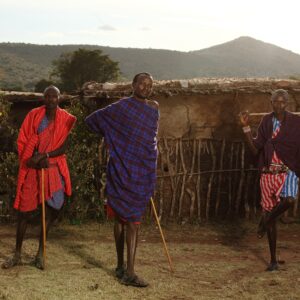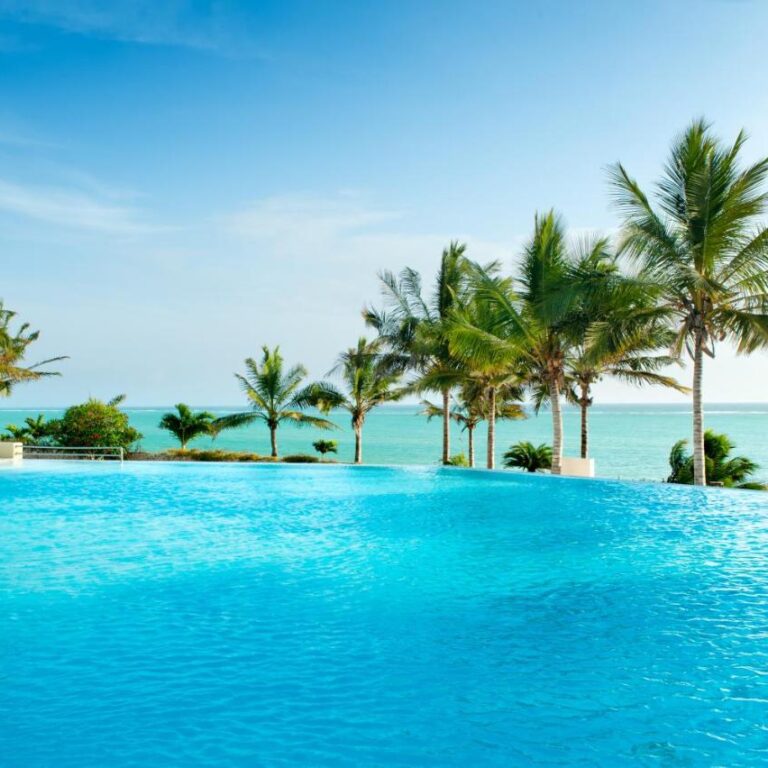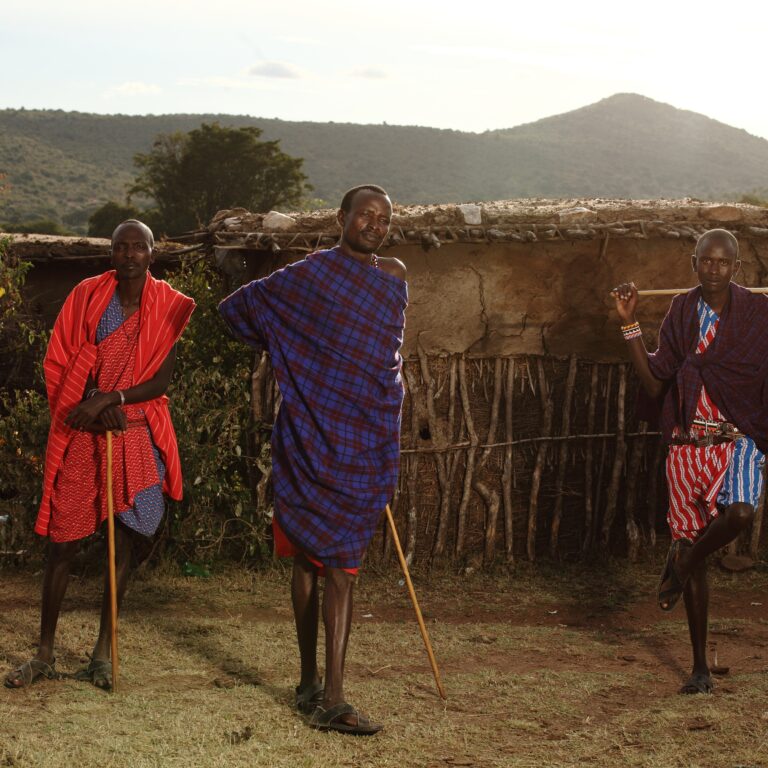Discovering Tanzania in February: A Tropical Paradise
February is a great time to visit Tanzania, particularly for safaris and wildlife viewing. It falls within the green season, offering warm weather and lush landscapes, especially in the north. While it’s the warmest month, occasional showers are possible, particularly in the south. Birdwatching is excellent, and you might witness the wildebeest calving season in the southern Serengeti.
Tanzania, located on the eastern coast of Africa, boasts a rich tapestry of landscapes, cultures, and wildlife. February marks a unique time to explore this enchanting country, offering a delightful combination of pleasant weather and diverse activities. In this article, we’ll guide you through the weather conditions, suggest must-visit destinations, provide essential travel tips, and answer frequently asked questions to ensure an unforgettable Tanzanian adventure.
Tanzania Weather in February: A Tropical Haven
February is part of Tanzania’s dry season, making it an ideal time to visit. The weather is characterized by warm temperatures and minimal rainfall, creating comfortable conditions for outdoor activities. The coastal areas, including Dar es Salaam and Zanzibar. Experience temperatures ranging from 25°C to 30°C (77°F to 86°F), while the interior regions, like Arusha and the Serengeti, boast slightly cooler temperatures, ranging between 15°C and 25°C (59°F to 77°F). and the average rainfall is a low/moderate 7 cm (2 inches). There is a large expat population. There are many things to do there such as going to the nearby huge natural preserves for excursions and dining at gourmet restaurants.
Where to Go and What to Do Tanzania in February
Serengeti National Park: February marks the peak of the Great Migration in the Serengeti. Witness thousands of wildebeest and zebras crossing the plains in search of greener pastures. The abundance of wildlife makes it a paradise for safari enthusiasts.
Temperatures continue rising, and the migration is still on the Ndutu Plains. February is one of the optimal months for trekking Kilimanjaro, for safaris in the northern and southern parks, and for visiting Zanzibar for a beach holiday.
Zanzibar: Explore the idyllic beaches of Zanzibar, where the turquoise waters and white sands create a picture-perfect setting. Snorkeling and diving opportunities abound in the warm Indian Ocean, allowing you to discover vibrant coral reefs and diverse marine life.
Mount Kilimanjaro: If you’re seeking adventure, consider tackling the majestic Mount Kilimanjaro. February offers clear skies and manageable temperatures for climbing Africa’s highest peak.
Ngorongoro Crater: Experience the unique ecosystem of the Ngorongoro Crater, a UNESCO World Heritage Site. This natural caldera is home to a variety of wildlife, including elephants, lions, and rhinos.
What to Bring: Navigating Tanzania in February
Pack Light and Comfortable Clothing: Given the warm temperatures, pack lightweight and breathable clothing. However, it’s advisable to bring a light jacket for cooler evenings, especially in the highland areas.
Sun Protection: Tanzania’s sun can be intense. Bring sunscreen, a wide-brimmed hat, and sunglasses to protect yourself during outdoor activities.
Malaria Prevention: Although February is a low-risk period for malaria, it’s wise to take precautions. Consult with a healthcare professional for appropriate anti-malarial medications and consider using insect repellent.
Hydration is Key: Stay hydrated, especially during safaris and outdoor excursions. Carry a reusable water bottle to ensure you have access to clean drinking water.
Why Visit Tanzania in February: A Tapestry of Wonders
February in Tanzania beckons travelers with a symphony of natural wonders, cultural richness, and a climate that invites exploration. Here are compelling reasons why this East African gem should be on your travel radar during the month of February:
The Great Migration Spectacle: February is the pinnacle of the Great Migration in the Serengeti. A breathtaking natural phenomenon that should be on every wildlife enthusiast’s bucket list. Witness millions of wildebeest, zebras, and gazelles embarking on their epic journey across the plains in search of greener pastures. This awe-inspiring spectacle, with predators in tow, creates an unmatched safari experience.
Optimal Weather Conditions: February falls within Tanzania’s dry season, providing travelers with near-perfect weather conditions. Coastal areas like Zanzibar enjoy balmy temperatures ranging from 25°C to 30°C (77°F to 86°F), while inland regions boast cooler temperatures between 15°C and 25°C (59°F to 77°F). The dry climate ensures clear skies, making it an ideal time for various outdoor activities.
Serene Beach Retreats in Zanzibar: Escape to the pristine beaches of Zanzibar, where turquoise waters meet powdery white sands. February offers an ideal beach experience with warm temperatures, creating the perfect backdrop for relaxation and water activities. Whether you’re snorkeling among vibrant coral reefs or strolling through historic Stone Town. Zanzibar caters to a diverse range of interests.
Climbing Mount Kilimanjaro: February presents an excellent opportunity for adventurers seeking to conquer Africa’s highest peak, Mount Kilimanjaro. The dry conditions and clear skies enhance the climbing experience. Allowing trekkers to marvel at stunning vistas while ascending to the summit. The sense of accomplishment and the breathtaking views make this a rewarding endeavor.
Rich Cultural Experiences: Immerse yourself in Tanzania’s diverse culture by interacting with local tribes like the Maasai. February often sees cultural festivals and events that showcase traditional music, dance, and art. Engaging with the local communities provides a deeper understanding of Tanzania’s rich heritage and fosters meaningful connections.
Abundant Wildlife Viewing: Beyond the Great Migration, Tanzania’s national parks and reserves teem with wildlife in February. With animals congregating around water sources. Your chances of spotting the Big Five – lions, elephants, buffalos, leopards, and rhinos – are heightened, creating unforgettable moments for wildlife enthusiasts.
Tranquil Ngorongoro Crater: Explore the Ngorongoro Crater, a UNESCO World Heritage Site. Where a unique ecosystem thrives within the confines of an ancient volcanic caldera. February offers tranquil conditions for wildlife viewing, with the chance to spot a variety of animals. Including elephants, hippos, and rare black rhinos.
Off-Peak Travel Advantage: February falls outside the peak tourist season in Tanzania. This translates to fewer crowds and a more intimate experience with the country’s natural and cultural wonders. Enjoy the beauty of Tanzania without the hustle, allowing for a more relaxed and authentic exploration.
In essence, visiting Tanzania in February promises a harmonious blend of natural marvels, cultural encounters, and favorable weather conditions. Whether you’re drawn to the epic wildlife migrations, the tropical beach paradises, or the towering heights of Kilimanjaro. February unveils Tanzania in all its splendid glory, inviting you to be a part of its captivating narrative.
Accommodations: Where to Stay in Tanzania
Tanzania offers a range of accommodation options to suit various preferences and budgets. From luxury lodges overlooking the Serengeti to beachfront resorts in Zanzibar, you’ll find a plethora of choices. Some notable accommodations include:
Serengeti Serena Safari Lodge: Nestled in the heart of the Serengeti. This lodge offers stunning views of the plains and ensures a luxurious and comfortable stay.
Baraza Resort and Spa, Zanzibar: Located on the southeastern coast of Zanzibar. 5-star resort provides a blend of Swahili and Arabic architecture, delivering a truly indulgent experience.
Serena hotel, Ngorongoro Crater: Situated on the rim of the Ngorongoro Crater. Offers breathtaking views and a rustic yet elegant safari experience.
Tanzania in February FAQs
Certainly! If you’re planning a trip to Tanzania in February, particularly for activities like safari or beach vacations, here are some frequently asked questions (FAQs) that might be helpful:








